
Since 2010, the average pass rate for online courses in Michigan has hovered around 60 percent. Compared to the pass rate for traditional classrooms, this statistic has led some to condemn virtual schooling as a failed experiment.
We know from a wealth of research, however, that online learning — when implemented properly — can be used to further the bounds of student learning.
Research has shown that online learning can be used with K-12 students to:
- Expand the range of courses available to students beyond what a single school can offer, especially for small, rural or inner-city schools
- Allow flexibility to students facing scheduling conflicts
- Afford opportunities for elite athletes and performers, migrant youth, pregnant, at-risk or incarcerated student and students who are homebound due to illness or injury to continue their studies outside the traditional classroom
- Provide credit recovery programs for students who have failed courses and/or dropped out of school, allowing them to get back on track to graduate
- Help students who are currently performing below grade-level to begin catching up through blended learning
- Personalize instruction to the needs of individual students
- Provide on-demand online tutoring
- Increase the teaching of technology skills by embedding technology literacy in academic content
Current data on student success in online learning does not live up to the promise we see exhibited in our research. Our latest report estimates the statewide virtual pass rate at roughly 55 percent.
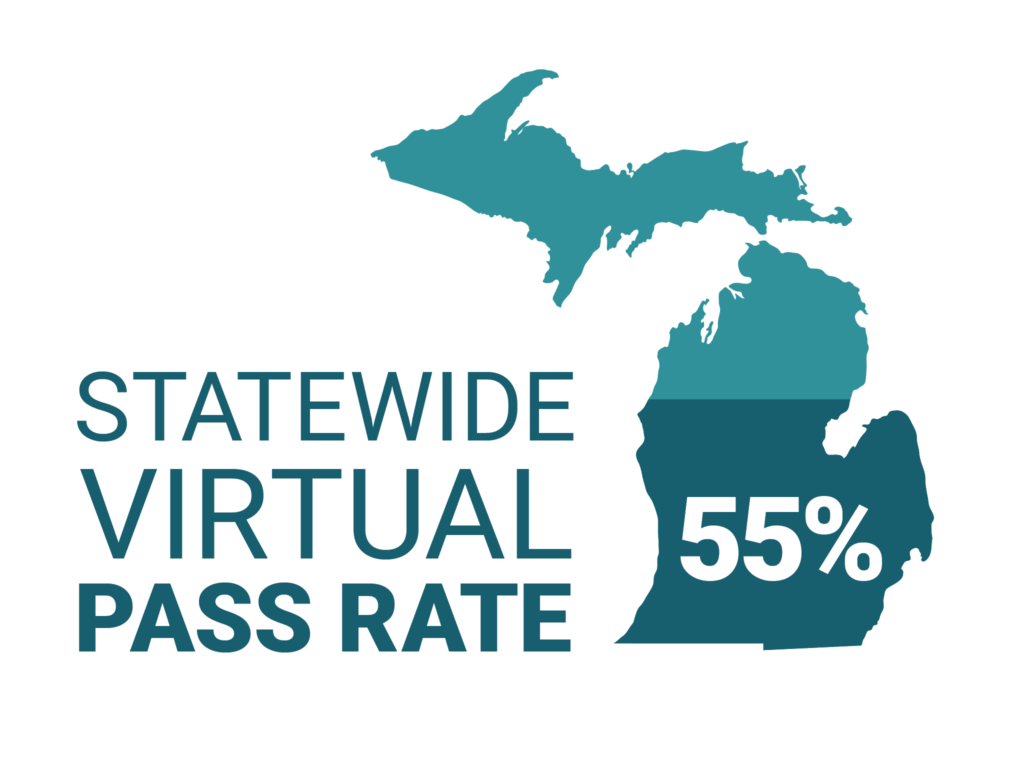
In the past decade, we’ve seen the number of virtual learners in Michigan nearly triple. Despite the rapidly growing numbers of online learners, the statewide virtual pass rate has not improved. Quite the opposite, this number has steadily decreased from 66 percent in 2010-11 to 55 percent this past academic year.
Clearly, the inverse relationship between the number of and the success of online learners in our state presents a problem that needs to be addressed.
That’s why the Michigan Virtual Learning Research Institute conducts annual reviews of the effectiveness of online learning in our state. Our goal is to diagnose what’s going on in Michigan’s virtual classrooms — analyzing which strategies are effective and which areas need improvement — so we can ultimately provide our students with the digital learning experiences they need to succeed.
In this article, we provide a visual overview of the Michigan K-12 Virtual Learning Effectiveness Report, 2016-17. The findings from this report offer an illuminating picture of what works well and what does not work well when it comes to online learning in our state.
Who’s taking online courses?
To begin, let’s examine who’s enrolling in our state’s online courses. This past year, 7 percent of Michigan students took at least one virtual course, with over 100,000 students enrolling in a total of more than half a million online courses.

The majority of Michigan school districts had students enrolled in online courses. Last year, two-thirds of the districts in our state reported having at least one virtual enrollment. In total, this means over 1,000 Michigan schools had virtual learners.

The bulk of these enrollments are coming from schools with at-scale online programs. What we’re seeing is that schools with 100 or more virtual enrollments accounted for 97 percent of the half a million total enrollments in our state. It’s typical for schools to either rely heavily on online programs to meet students needs or to rarely use online learning at all.
Virtual Enrollments By Grade Level
Though students from grades K-12 enrolled in online courses, the vast majority of online enrollments (79 percent) came from high school students. Last year, high school seniors alone accounted for over one-quarter (27 percent) of total virtual enrollments.
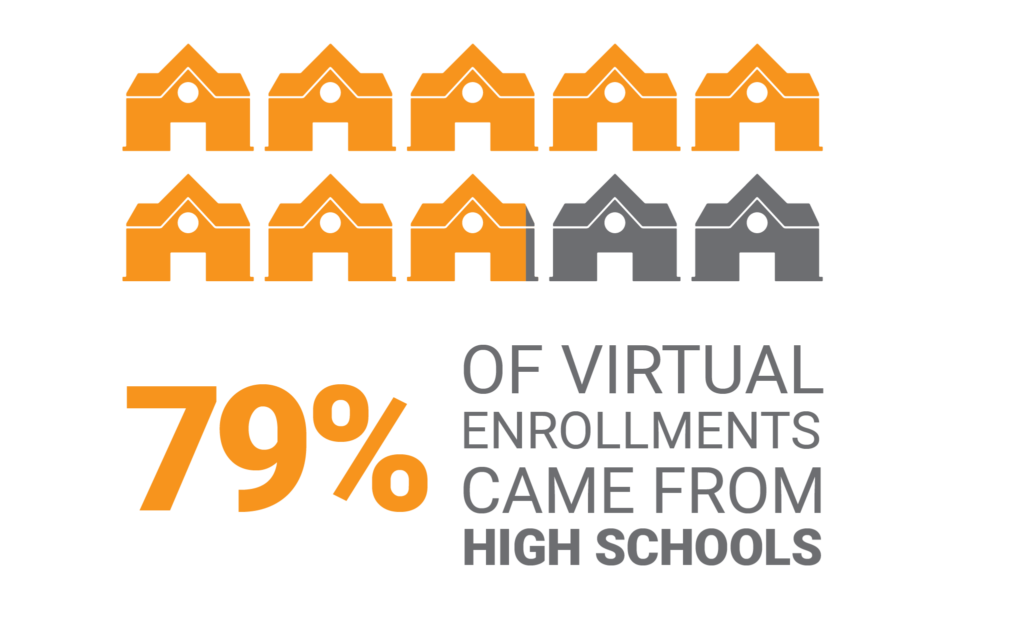
Virtual Enrollments By Subject
Breaking the data down by subject, we saw the majority of online courses (67 percent) taken in core subject areas.

The subject area with the highest number of enrollments last year was English Language Arts, accounting for 19 percent of total enrollments. The pass rate for ELA courses statewide was 52 percent last year.
Next came a three-way tie between Social Sciences and History, Mathematics, and Life and Physical Sciences, each accounting for just over 10 percent of all online enrollments statewide. Last year, the virtual pass rates for these subject areas were as follows:
- Social Sciences and History = 56 percent
- Mathematics = 49 percent
- Life and Physical Sciences = 53 percent
There is room for improvement, it seems, in the way core subjects are being presented to online learners in our state.
Who’s succeeding in their online courses? Who isn’t?
Pass rates for virtual learning become particularly revealing when we investigate which students are succeeding and which students are not.
We know, for example, that 27 percent of the schools offering online courses had a pass rate of 90-100 percent. For these schools, online learning seems to be working fairly well.
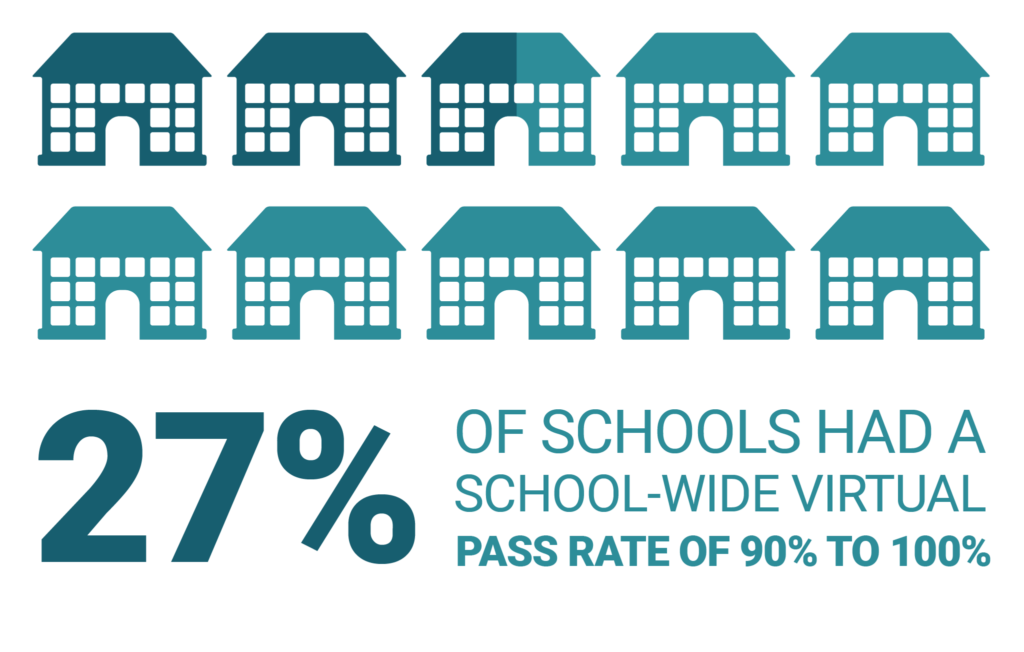
Last year, over half of Michigan schools offering online courses had pass rates of 70 percent or higher. But, of course, the glass is half-full or half-empty depending on how you look at it. The other half of our schools had pass rates below 70 percent.
It’s no surprise that there is a disparity between the top-performing and lowest-performing schools in our state. Online learning is not free from the trends that haunt our education system.
Alternative Education Students Need Additional Support
We also see a disparity in the pass rates for students who take online courses with a general education emphasis and those who take online courses with an alternative education emphasis.
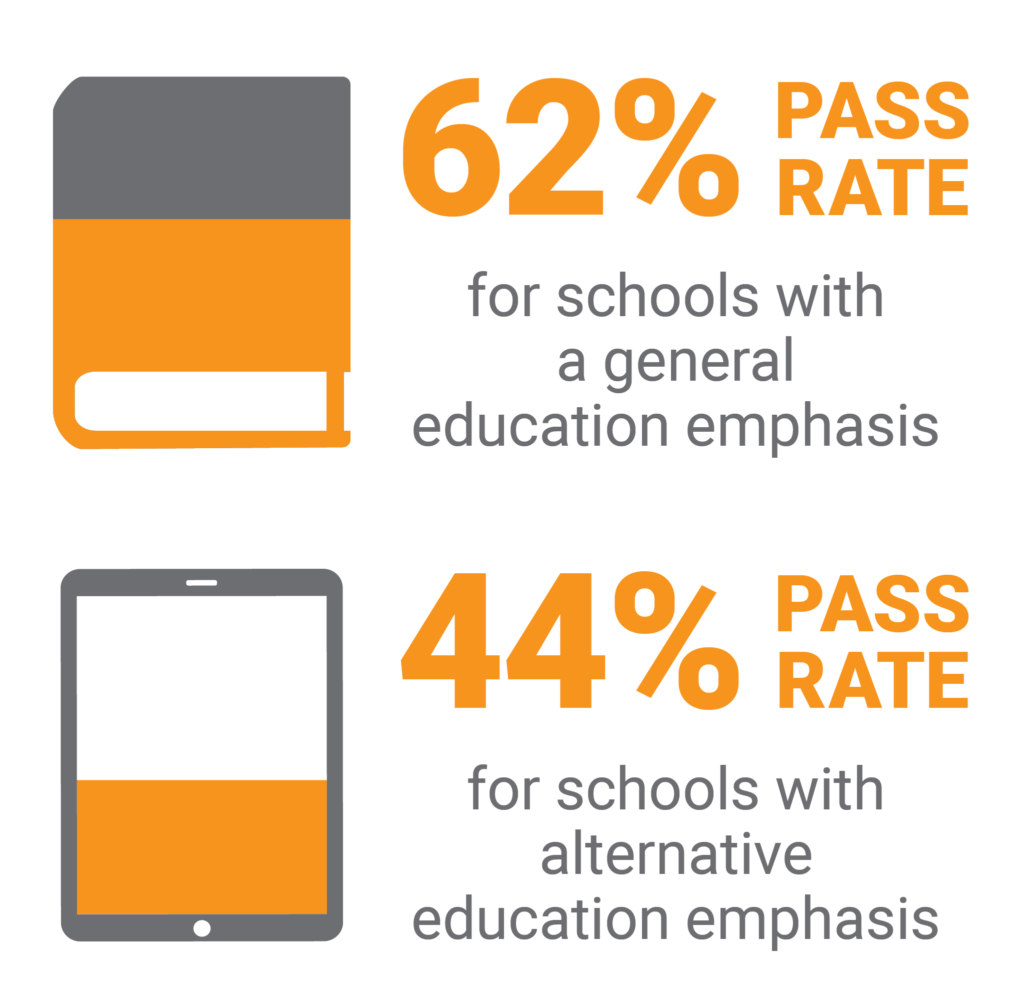
Perhaps what this disparity reveals is that online learning does not work as a last chance option for struggling students unless there are appropriate support systems in place to help these students succeed.
In the 2016-17 school year, we began piloting our Essentials courses for students in alternative education programs and those seeking credit recovery. In designing these courses, we quickly realized that these students needed additional support to succeed.
So far — by providing comprehensive student orientation modules, free mentor training and highly-qualified online instructors — we’ve seen improved student success rates. Our overall pass rate for the 58 students who took our Essentials pilot in Summer 2017 was 69 percent.
We find these numbers promising, and we hope to continue to improve these courses to better meet the needs of the students who most need our help.
Online Learning is Failing Students in Poverty
Another significant area for improvement in online learning lies in the success rates of students living in poverty. Despite the fact that well over half (62 percent) of our virtual enrollments came from students in poverty, we see a gap of nearly 20 percentage points between the pass rates for students in poverty (48 percent) and students not in poverty (66 percent).
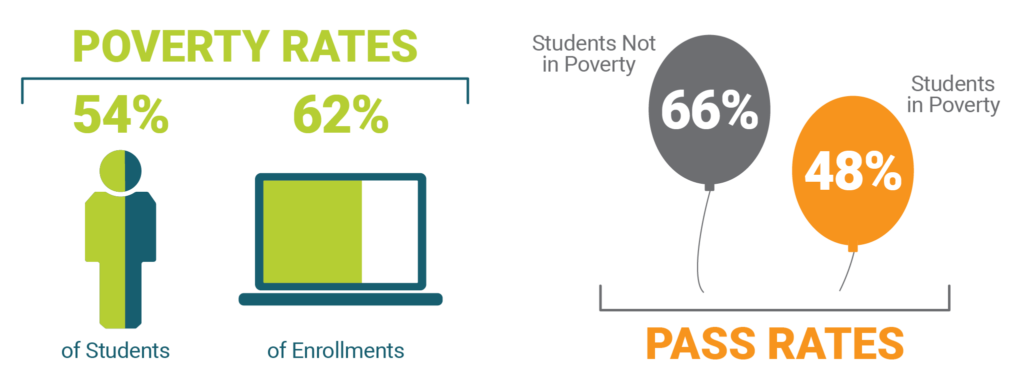
The promise and potential of online learning have always been that it can help any student, anywhere. But clearly, we’re failing students in poverty, and this presents a huge area of growth for leaders in online learning to examine.
Of course, poverty is a complex societal issue that warrants problem-solving from multiple vantage points. But one thing is clear: when transitioning students into online environments, we can do better to provide students living in poverty with the resources they need to succeed.
Less is More When It Comes to Online Learning
We also see discrepancies in success rates based on the type of online program in which students enroll. We see the lowest pass rates (49 percent) among students in full-time cyber schools.
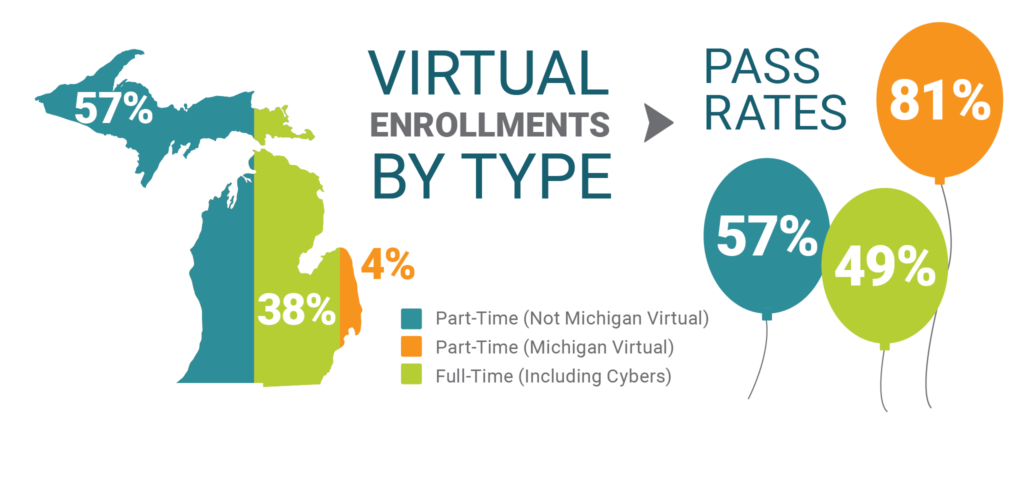
Among part-time online programs (excluding Michigan Virtual), we found an average pass rate of 57 percent. Though part-time online programs using Michigan Virtual courses made up only 4 percent of the total virtual enrollments in the state of Michigan, we are proud to have reached an overall pass rate of 81 percent for these courses.
One lesson we can take away from these findings is that less is more when it comes to virtual learning. While about half of virtual learners passed every single one of their online courses, one-quarter did not pass any of their online courses.
Breaking this down, we see a negative correlation between the number of online courses in which a student enrolls and their success rate. Out of the over 25,000 students who did not pass any of their virtual courses, 11,500 enrolled in one or two online courses, 9,500 enrolled in five or more online classes and 2,700 enrolled in 11 or more online courses.
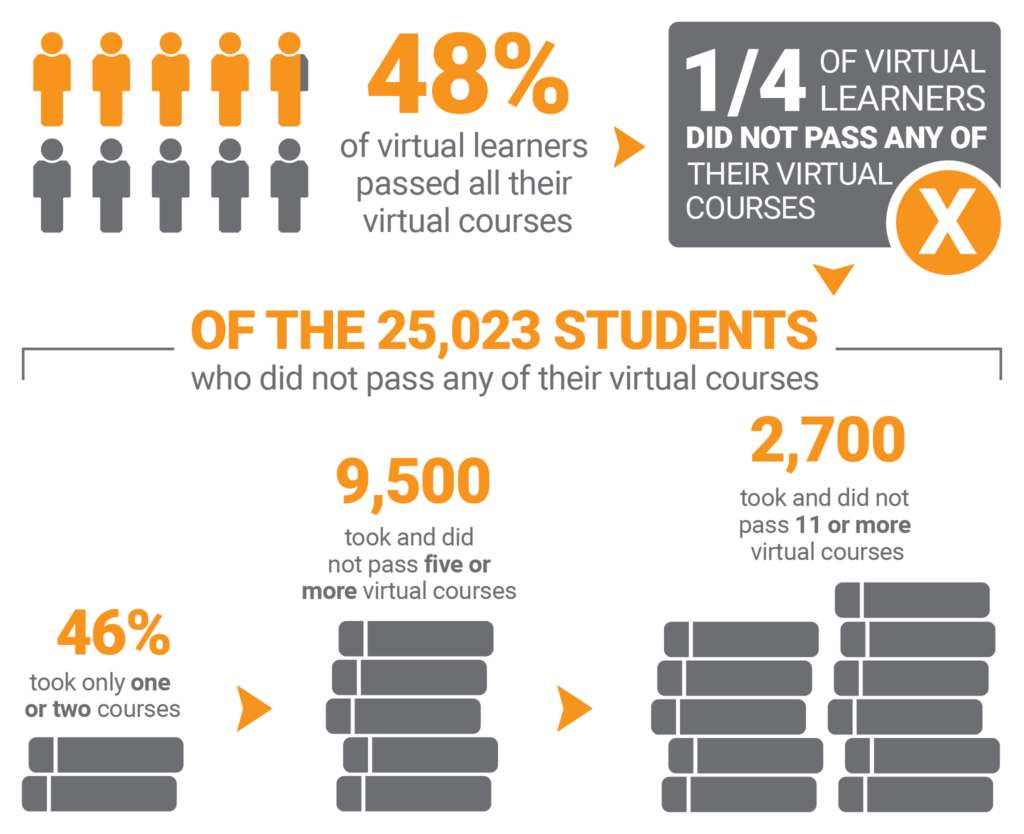
In fact, as the number of online classes in which a student enrolls increase, their pass rates tend to decrease. Students who took 1-2 virtual classes last year had a 73 percent pass rate while students taking 5+ virtual courses had a 51 percent pass rate.
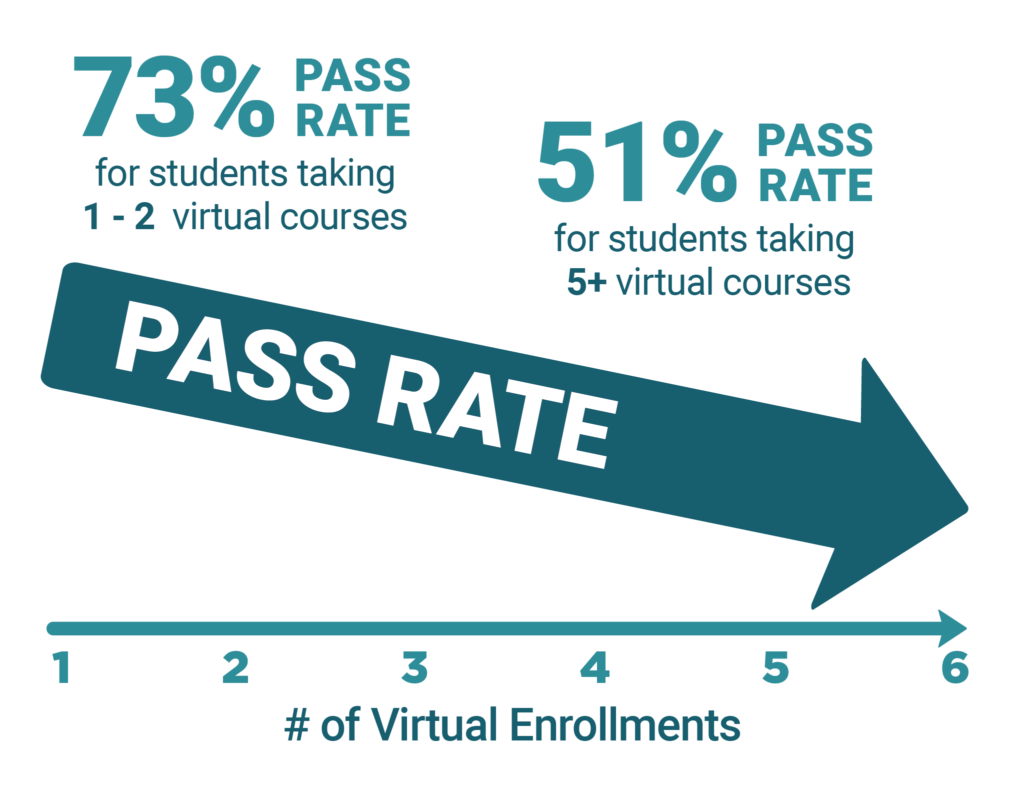
We have to remember that online learning provides a very different learning environment compared to face-to-face classrooms. Our students typically have 8-12 years of practice learning in face-to-face settings and, typically, less than 8-12 hours of training in how to learn online before they are expected to succeed in this new medium.
Additional support is particularly necessary for students who are already struggling in their face-to-face classrooms. The odds are, if a student is performing well in their traditional classes, they are much more likely to succeed in their online courses.
For too many students, online learning becomes a last chance for success in a system that has already failed them. There is potential to utilize online and blended learning for revolutionary outcomes, but only if we provide students with the necessary support systems. Otherwise, are we really helping them at all?
Overall, this data should motivate educational leaders to hold critical conversations about what’s going on in online programs in the state of Michigan. If you’d like to read the full version of our Michigan’s K-12 Virtual Learning Effectiveness Report, 2016-17, you can download it here:
If you are looking to improve the effectiveness of your school’s online program, we also offer a series of free guides on best practices in online learning for students, parents, mentors, teachers and school boards. Explore our free collection at the link below:
In order to move forward the needle of student achievement for online learners, our Institute has also begun offering free online program reviews to Michigan K-12 schools that identify strengths and opportunities for growth in their online learning programs. Specifically, these free reviews look at six key aspects of successful online learning programs:
- Content Procurement and Monitoring Practices
- Instructor Training and/or Communication
- Mentor Training and Student Support Techniques
- Student Selection Processes
- Parent Communication
- Overall Program Evaluation
These reviews are available at no charge to Michigan K-12 schools and are conducted by trained researchers from the Michigan Virtual Learning Research Institute. For more information, visit the following page:




